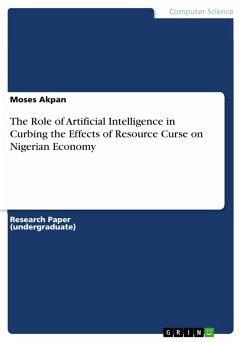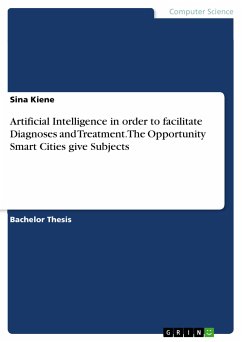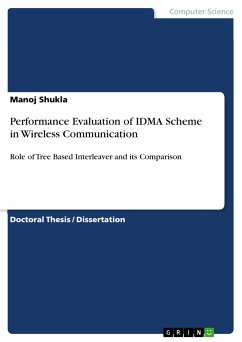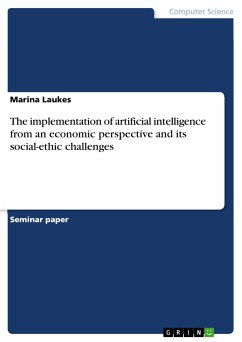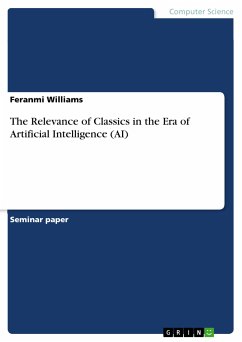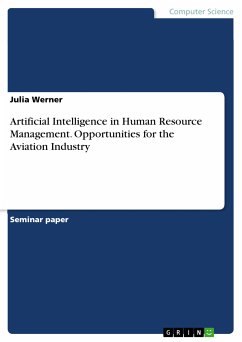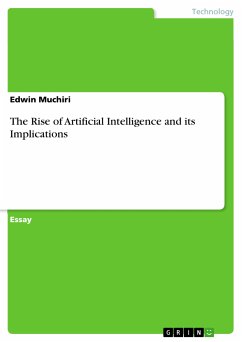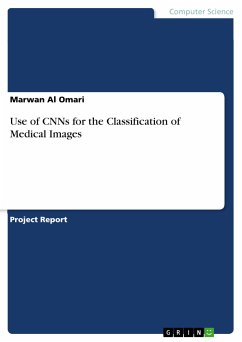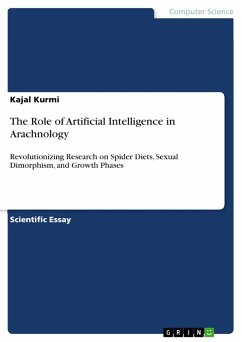
The Role of Artificial Intelligence in Arachnology (eBook, PDF)
Revolutionizing Research on Spider Diets, Sexual Dimorphism, and Growth Phases

PAYBACK Punkte
0 °P sammeln!
Scientific Essay from the year 2025 in the subject Computer Sciences - Artificial Intelligence, grade: A, , language: English, abstract: The emergence of artificial intelligence (AI) in biological sciences has initiated a paradigm shift in research approaches, enabling scientists to tackle long-standing issues in ecology, morphology, and behaviour. Arachnology, the study of spiders and their relatives, has relied upon time-intensive and manual observation and data-gathering techniques, often impeded by the vast diversity and ecological complexity of spider species. The present article evaluate...
Scientific Essay from the year 2025 in the subject Computer Sciences - Artificial Intelligence, grade: A, , language: English, abstract: The emergence of artificial intelligence (AI) in biological sciences has initiated a paradigm shift in research approaches, enabling scientists to tackle long-standing issues in ecology, morphology, and behaviour. Arachnology, the study of spiders and their relatives, has relied upon time-intensive and manual observation and data-gathering techniques, often impeded by the vast diversity and ecological complexity of spider species. The present article evaluates the effect of AI in transforming how we conduct arachnological research focusing on three primary sectors of research: dietary ecology, sexual dimorphism, and juvenile life stages. AI includes machine learning, deep learning, and computer vision, in which researchers can now explore large and heterogeneous datasets, uncover ecological patterns that were previously inaccessible, as well as provide precision beyond conventional approaches. We integrate our understanding of the current state of AI in arachnology, and subsidiaries, review methods of innovation, summarised case studies from recent literature, and critically evaluate some of the opportunities and challenges presented by incorporating AI into arachnology. Further, we do a contextual evaluation of the ramifications of AI-based arachnology for biodiversity monitoring, ecological theory, and conservation policy. We find that AI not only allows researcher to more efficiently and extensively study spiders, but it also offers a foundation for the use of computational technologies in invertebrate biology.The final part of the research offers suggestions for cross-disciplinary partnerships, consistency in data procedures, and the responsible use of AI in biodiversity science.
Dieser Download kann aus rechtlichen Gründen nur mit Rechnungsadresse in A, B, BG, CY, CZ, D, DK, EW, E, FIN, F, GR, HR, H, IRL, I, LT, L, LR, M, NL, PL, P, R, S, SLO, SK ausgeliefert werden.




